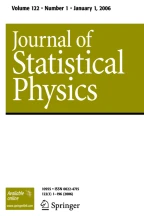Abstract
We introduce a model for self-organized dynamics which, we argue, addresses several drawbacks of the celebrated Cucker-Smale (C-S) model. The proposed model does not only take into account the distance between agents, but instead, the influence between agents is scaled in term of their relative distance. Consequently, our model does not involve any explicit dependence on the number of agents; only their geometry in phase space is taken into account. The use of relative distances destroys the symmetry property of the original C-S model, which was the key for the various recent studies of C-S flocking behavior. To this end, we introduce here a new framework to analyze the phenomenon of flocking for a rather general class of dynamical systems, which covers systems with non-symmetric influence matrices. In particular, we analyze the flocking behavior of the proposed model as well as other strongly asymmetric models with “leaders”.
The methodology presented in this paper, based on the notion of active sets, carries over from the particle to kinetic and hydrodynamic descriptions. In particular, we discuss the hydrodynamic formulation of our proposed model, and prove its unconditional flocking for slowly decaying influence functions.
Similar content being viewed by others
References
Aoki, I.: A simulation study on the schooling mechanism in fish. Bull. Jpn. Soc. Sci. Fish. (Japan) 48(8), 1081 (1982)
Ballerini, M., Cabibbo, N., Candelier, R., Cavagna, A., Cisbani, E., Giardina, I., Lecomte, V., Orlandi, A., Parisi, G., Procaccini, A., et al.: Interaction ruling animal collective behavior depends on topological rather than metric distance: evidence from a field study. Proc. Natl. Acad. Sci. USA 105(4), 1232 (2008)
Birnir, B.: An ODE model of the motion of pelagic fish. J. Stat. Phys. 128(1), 535–568 (2007)
Buhl, J., Sumpter, D.J.T., Couzin, I.D., Hale, J.J., Despland, E., Miller, E.R., Simpson, S.J.: From disorder to order in marching locusts. Science 312(5778), 1402–1406 (2006). American Association for the Advancement of Science
Camazine, S., Deneubourg, J.L., Franks, N.R., Sneyd, J., Theraulaz, G., Bonabeau, E.: Self-organization in Biological Systems. Princeton University Press, Princeton (2001)
Carrillo, J.A., Fornasier, M., Rosado, J., Toscani, G.: Asymptotic flocking dynamics for the kinetic Cucker-Smale model. SIAM J. Math. Anal. 42, 218–236 (2010)
Couzin, I.D., Krause, J., James, R., Ruxton, G.D., Franks, N.R.: Collective memory and spatial sorting in animal groups. J. Theor. Biol. 218(1), 1–11 (2002)
Cucker, F., Smale, S.: Emergent behavior in flocks. IEEE Trans. Autom. Control 52(5), 852 (2007)
Cucker, F., Smale, S.: On the mathematics of emergence. Jpn. J. Math. 2(1), 197–227 (2007)
Degond, P., Motsch, S.: Continuum limit of self-driven particles with orientation interaction. Math. Models Methods Appl. Sci. 18(1), 1193–1215 (2008)
Degond, P., Motsch, S.: Large scale dynamics of the persistent turning walker model of fish behavior. J. Stat. Phys. 131(6), 989–1021 (2008)
Grimm, V., Railsback, S.F.: Individual-Based Modeling and Ecology. Princeton University Press, Princeton (2005)
Grégoire, G., Chaté, H.: Onset of collective and cohesive motion. Phys. Rev. Lett. 92(2), 25702 (2004)
Ha, S.Y., Liu, J.G.: A simple proof of the Cucker-Smale flocking dynamics and mean-field limit. Commun. Math. Sci. 7(2), 297–325 (2009)
Ha, S.Y., Tadmor, E.: From particle to kinetic and hydrodynamic descriptions of flocking. Kinet. Relat. Models 1(3), 415–435 (2008)
Ha, S.Y., Lee, K., Levy, D.: Emergence of time-asymptotic flocking in a stochastic Cucker-Smale system. Commun. Math. Sci. 7(2), 453–469 (2009)
Hemelrijk, C.K., Hildenbrandt, H.: Self-organized shape and frontal density of fish schools. Ethology 114(3), 245–254 (2008)
Hubbard, J.H., West, B.H.: Differential Equations: A Dynamical Systems Approach. Higher-Dimensional Systems. Springer, Berlin (1995)
Huth, A., Wissel, C.: The simulation of the movement of fish schools. J. Theor. Biol. 156(3), 365–385 (1992)
Huth, A., Wissel, C.: The simulation of fish schools in comparison with experimental data. Ecol. Model. 75, 135–146 (1994)
Parrish, J.K., Viscido, S.V., Grunbaum, D.: Self-organized fish schools: an examination of emergent properties. Biol. Bull. 202(3), 296–305 (2002). Marine Biological Laboratory, Woods Hole
Reynolds, C.W.: Flocks, herds and schools: a distributed behavioral model. In: ACM SIGGRAPH Computer Graphics, vol. 21, pp. 25–34 (1987)
Shen, J.: Cucker-Smale flocking under hierarchical leadership. SIAM J. Appl. Math. 68(3), 694–719 (2008)
Spohn, H.: Large Scale Dynamics of Interacting Particles. Springer, Berlin (1991)
Vicsek, T., Czirók, A., Ben-Jacob, E., Cohen, I., Shochet, O.: Novel type of phase transition in a system of self-driven particles. Phys. Rev. Lett. 75(6), 1226–1229 (1995)
Viscido, S.V., Parrish, J.K., Grunbaum, D.: Individual behavior and emergent properties of fish schools: a comparison of observation and theory. Mar. Ecol. Prog. Ser. 273, 239–249 (2004)
Youseff, L., Barbaro, A., Trethewey, P., Birnir, B., Gilbert, J.G.: Parallel modeling of fish interaction. In: 11th IEEE International Conference on Computational Science and Engineering, CSE ’08, pp. 234–241. IEEE Comput. Soc., Los Alamitos (2008)
Author information
Authors and Affiliations
Corresponding author
Additional information
To Claude Bardos on his 70th birthday, with friendship and admiration.
Rights and permissions
About this article
Cite this article
Motsch, S., Tadmor, E. A New Model for Self-organized Dynamics and Its Flocking Behavior. J Stat Phys 144, 923 (2011). https://doi.org/10.1007/s10955-011-0285-9
Received:
Accepted:
Published:
DOI: https://doi.org/10.1007/s10955-011-0285-9
